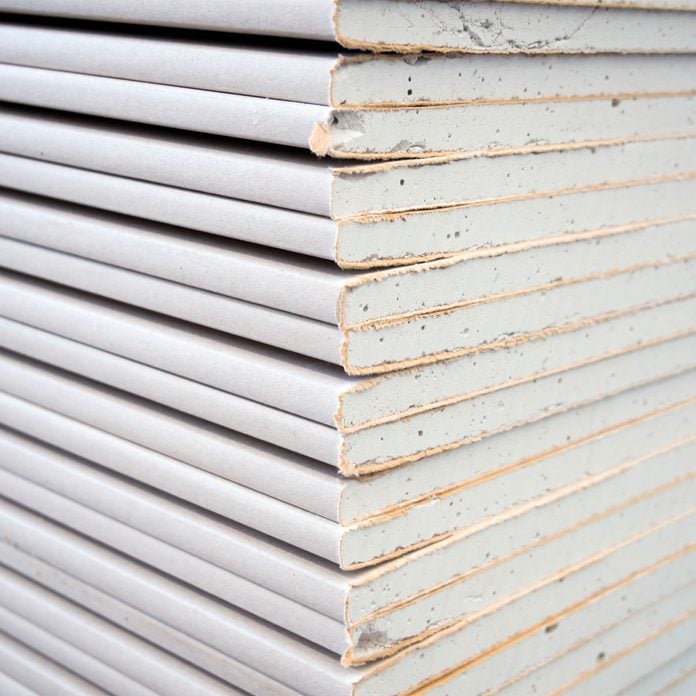
Regular Drywall
Regular (gray) drywall is the most common type of drywall and it’s the only kind many people are familiar with. All drywall has one thing as its core—gypsum, a common mineral found globally. In regular drywall, and most other types as well, gypsum is sandwiched between two layers of paper. There is paper on the back (usually brown) and the face, which, in the case of regular drywall, is gray. It can be used throughout a house and comes in a number of drywall dimensions—the most common size is a 4-foot by 8-foot sheet. And, as the most common type of drywall, it is also the cheapest, selling for about $12 per 4-foot by 8-foot sheet, depending on where you live.
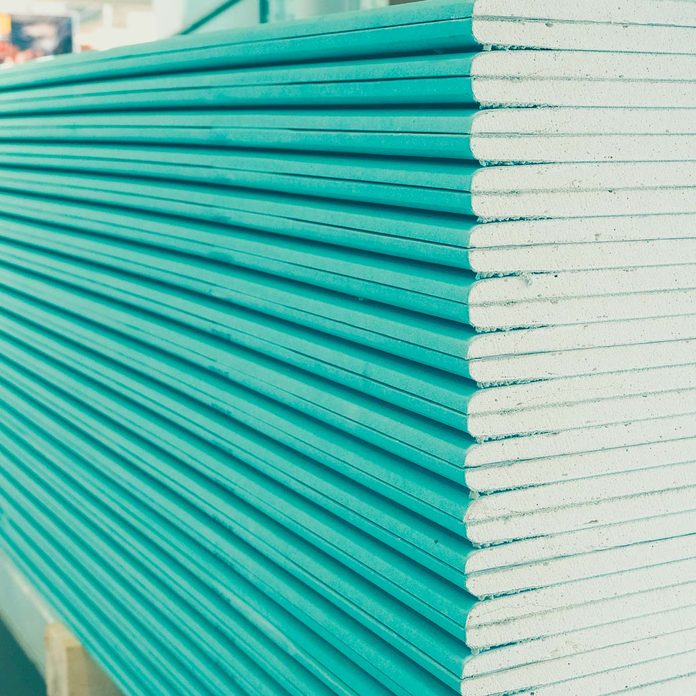
Green Drywall
Green drywall is a type of drywall that’s mold resistant and is used in applications where moisture can be an issue—so most commonly, bathrooms. To maximize the mold resistance, use mold-resistant drywall mud, aka joint compound. Green drywall generally costs about 20% more than regular drywall.
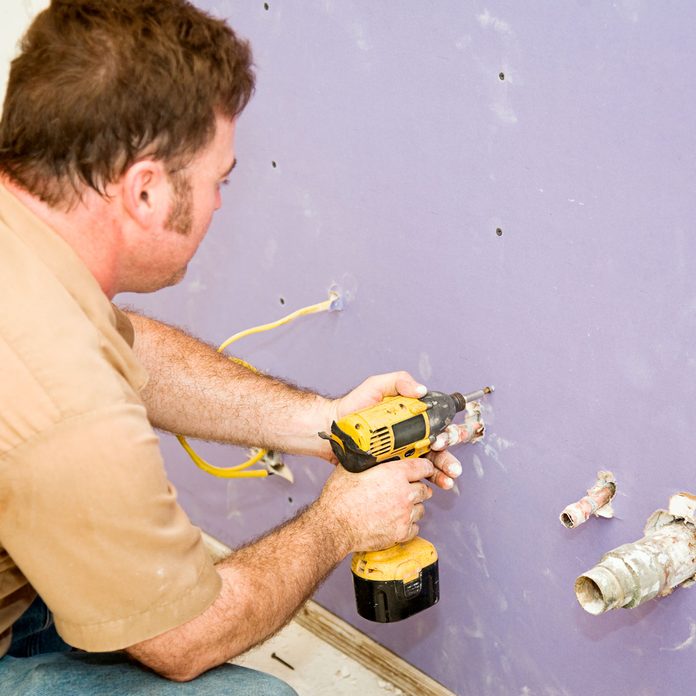
Purple Drywall
Purple drywall resists moisture, mold and mildew. In addition, Purple drywall also resists scratches , scuffs and dents so it’s good choice for high-traffic areas. Purple drywall is about 30% more expensive than regular drywall.
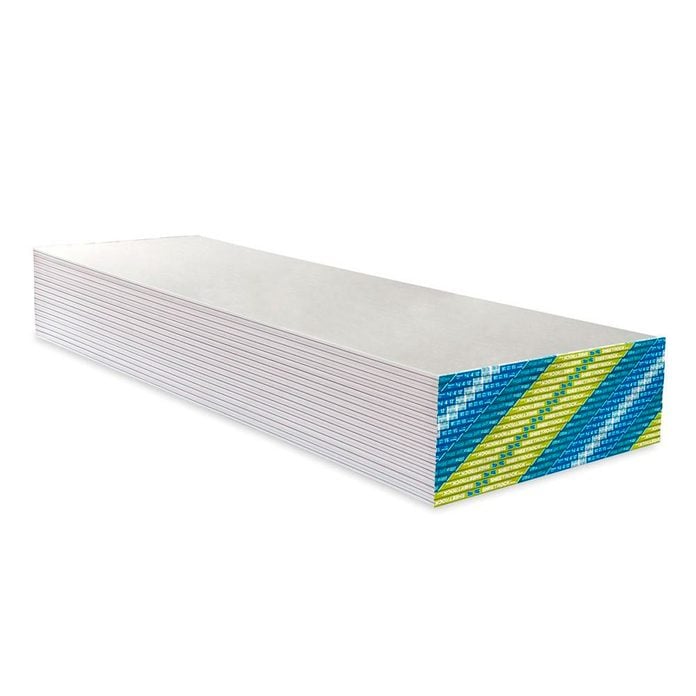
Fire-Resistant Drywall
All types of drywall are inherently fire resistant. However, there is a special type of drywall that has higher fire-resistance ratings than others. This drywall is known as Type X, and it’s thicker (5/8 inch instead of 1/2 inch or less). Type X drywall has glass fibers mixed into the gypsum to increase its resistance to fire. It is not fireproof, but most Type X drywall has a one-hour fire rating. Type X drywall is hung just like regular drywall and is usually required by building codes for the shared wall between the house and an attached garage. This thicker drywall costs about 10% more than regular drywall.

Sound Dampening Drywall
Sound damping drywall is the same thickness as regular drywall (1/2 inch,) but it is layered. In between the front and back paper is a 1/4-inch layer of gypsum, followed by a membrane and then another 1/4-inch layer of gypsum. The layering effect increases the Sound Transmission Class (STC) and reduces noise transmission from one room to the another. It doesn’t require special tools or equipment to install this drywall and it can be used in any room of the house. It is significantly pricier than regular drywall, however, costing about 400% more than regular drywall.
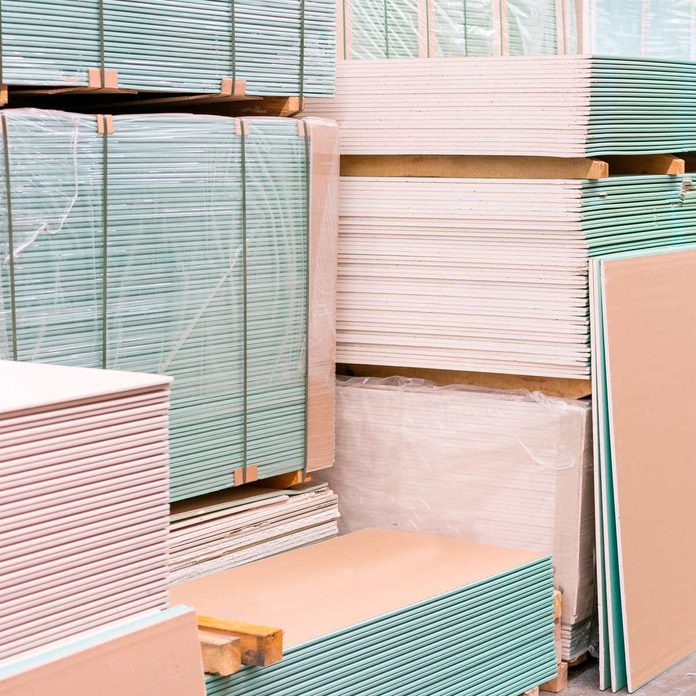
More on Drywall Sheet Sizes
All types of drywall come in standard 4-foot by 8 foot-sheets. However, they also come in other dimensions. Most of the variation in size involves length; 8-, 10-, 12- and even 16-foot sheets are available. Longer sheets are often used to cover large areas and are usually used only by professionals. Many of these types of drywall also come in 54 inch width (4.5 feet). These are used for rooms with 9-foot ceilings. It’s not surprising that the price increase as you increase in length, for example, a 10-foot sheet might cost 25% more than an 8-foot sheet.
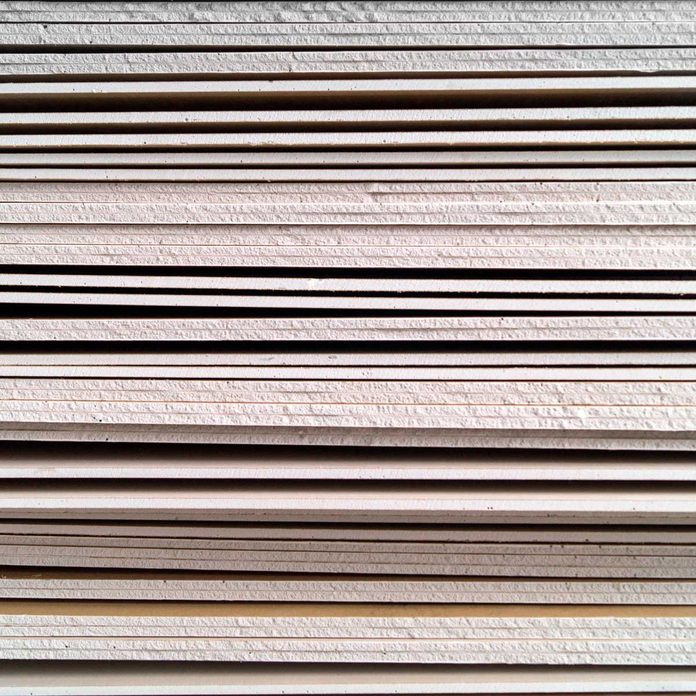
And a Few Words on Drywall Thickness
Finally, some types of drywall, like Type X fire-resistant drywall, are available only with a 5/8-inch thickness. However, other types of drywall come in different thicknesses; the most common are 1/4 inch, 3/8 inch, 1/2 inch and 5/8 inch. The most common thicknesses for general application are 3/8 inch and 1/2 inch. However, several decades ago, 1/2 inch became the industry standard. Quarter-inch drywall is often used to cover damaged plaster walls and also for curved areas because it bends easier than thicker drywall. Then the 1/4-inch-thick drywall can be double layered to get to the conventional 1/2 inch thickness to match the rest of the wall. Quarter-inch and 5/8-inch drywall tend to be slightly more expensive than 1/2 inch or 3/8 inch.
